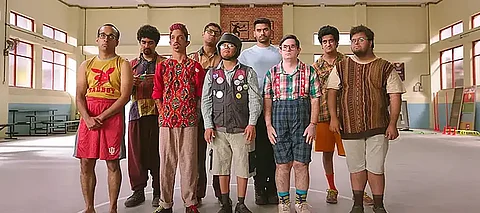

With the opening of Aamir Khan's film Sitare Zameen Par, attention has shifted to a lesser-known but highly prevalent condition: Invisible Autism Syndrome. The sensitive and insightful portrayal of the film has brought to the forefront what invisible autism is, how it impacts people and families, and if it can be "cured."
Invisible autism is a type of autism spectrum disorder (ASD) where the signs are not easily detectable and not apparent to other individuals. As opposed to typical autism, where symptoms like a delayed speech onset or stereotypy may not be as hard to recognize, those who have invisible autism—usually those who have high-functioning autism or Asperger's syndrome—can easily fit into mainstream society. They are usually of average or above-average intelligence and possess good verbal ability but still continue to be seriously impaired in the following areas:
Since these problems are not visible, invisible autistic children and adults are misconstrued and described as shy, clumsy, or even rebellious and typically don't get the help they require.
Aamir Khan's movie Sitare Zameen Par has been greeted with acclaim for its realistic and sympathetic portrayal of undiagnosed autism. After being sentenced to community service for a DUI, a hot-headed basketball coach is assigned to train a team of neurodivergent adults. Initially reluctant and frustrated, he soon discovers the unique strengths, humor, and resilience of his players. As the coach learns to see the world through their eyes, his own outlook on life, success, and empathy transforms. Inspired by their determination and spirit, he finds redemption and a new sense of purpose, proving that sometimes the greatest lessons come from the most unexpected places.
This storyline highlights themes of acceptance, personal growth, and the power of inclusivity—echoing the heartfelt and transformative journey depicted in Sitare Zameen Par.
The film, by poignant storytelling, illustrates:
The film's presentation is an eye-opener and heartwarming at the same time because it encourages the audience to look more towards the root causes that haunt the adults and children equally in their everyday lives.
Invisible autism spectrum disorder remains incurable. It is a neurodevelopmental disorder, which means there is a discrepancy in brain development and how the brain processes information. There is no cure, but intervention and treatment can significantly improve quality of life with helpful therapies, especially in children.
To be able to accomplish the optimal outcome for the individuals, the goal is not to cure the individual but to help them work through their unique strengths and struggles.
Altogether, in the wake of Sitare Zameen Par, it is no wonder that autism becomes shrouded in misconceptions: stereotypes are exploited and sympathy is exploited. The message of the film is stark: all people are innately deserving of understanding, acceptance, and a chance to actually thrive regardless of how "normal" they may appear.